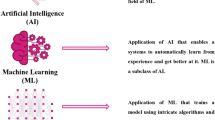Abstract
People depend on popular search engines to look for the desired health and nutrition information. Many search engines cannot semantically interpret, enrich the user’s natural language queries easily and hence do not retrieve the personalized information that fits the user’s needs. One reason for retrieving irrelevant information is the fact that people have different preferences where each one likes and dislikes certain types of food. In addition, some people have specific health conditions that restrict their food choices and encourage them to take other foods. Moreover, the cultures, where people live in, influence food choices while the search engines are not aware of these cultural habits. Therefore, it will be helpful to develop a system that semantically manipulates user’s queries and models the user’s preferences to retrieve personalized health and food information. In this paper, we harness semantic Web technology to capture user’s preferences, construct a nutritional and health-oriented user’s profile, model the user’s preferences and use them to organize the related knowledge so that users can retrieve personalized health and food information. We present an approach that uses the personalization techniques based on integrated domain ontologies, pre-constructed by domain experts, to retrieve relevant food and health information that is consistent with people’s needs. We implemented the system, and the empirical results show high precision and recall with a superior user’s satisfaction.







Similar content being viewed by others
Notes
References
Dominguez D et al (2006) PIPS: an integrated environment for health care delivery and healthy lifestyle support. In: 4th Workshop on Agent applied in Healthcare, ECAI2006. http://www.csc.liv.ac.uk/~floriana/papers/ecai06.pdf. Accessed 22 June 2012
Al-Nazer A, Helmy T (2013) Semantic query-manipulation and personalized retrieval of health, food and nutrition information. Elsevier Open Access Procedia Comput Sci J 19:163–170
Barnes J, Chu D (2010) Agent-based modeling, Springer London. http://link.springer.com/10.1007/978-3-642-24004-1. Accessed 22 Mar 2014
Bhattacharyya P, Garg A, Felix W (2015) Analysis of user keyword similarity in online social networks. J Soc Netw Anal Min 1(3):143–158 (July 2011)
Ehsan N, Diane J (2015) CRAFFT: an activity prediction model based on Bayesian networks. J Ambient Intell Humaniz Comput 6(2):193–205
Giuseppe G, Jussi P, Ville A, Jani M (2015) Evaluating context-aware user interface migration in multi-device environments. J Ambient Intell Humaniz Comput 6(2):259–277
Hyvönen E, Viljanen K, Suominen O (2007) HealthFinland—finish health information on the Semantic Web. Semant Web 4825:778–791
Li Y, Mostafa J (2006) A privacy enhancing infomediary for retrieving personalized health information from the Web. Personal Information Management, pp. 82–85
Makazhanov A, Rafiei D, Waqar M (2015) Predicting political preference of Twitter users. J Soc Netw Anal Min 4:193 (May 2014)
Matsumoto D, Juang L (2012) Culture and psychology, 5th edn. Cengage Learning Inc, United States
Sahay S, Ram A (2011) Socio-semantic health information access. In: Proceedings of the AAAI Spring Symposium on AI and Health Communication. http://www.aaai.org/ocs/index.php/SSS/SSS11/paper/download/2450/2855. Accessed 26 May 2014
Shumei Z, Paul M, Chris N, Huiru Z, Norman B (2013) An ontological framework for activity monitoring and reminder reasoning in an assisted environment. J Ambient Intell Humaniz Comput 4(2):157–168
Suominen O et al (2009) Web semantics. World Wide Web Internet Web Inf Syst 7:287–297
Thangaraj M, Chamundeeswari M (2011) A survey of agent-based personalized semantic information retrieval. IJCST 2(3):488–498
Wang Y, Liu Z (2005) Personalized health information retrieval system. In: Annual Symposium proceedings, p. 1149. http://www.pubmedcentral.nih.gov/articlerender.fcgi?artid=1560474&tool=pmcentrez&rendertype=abstract
Acknowledgments
The authors would like to acknowledge the support provided by King Abdulaziz City for Science and Technology (KACST) through the Science and Technology Unit at King Fahd University of Petroleum and Minerals for funding this work (project No.10-INF1381-04) as part of the National Science, Technology and Innovation Plan.
Author information
Authors and Affiliations
Corresponding author
Rights and permissions
About this article
Cite this article
Helmy, T., Al-Nazer, A. Semantic manipulation of user’s queries and modeling the health and nutrition preferences. J Ambient Intell Human Comput 6, 391–405 (2015). https://doi.org/10.1007/s12652-015-0293-8
Received:
Accepted:
Published:
Issue Date:
DOI: https://doi.org/10.1007/s12652-015-0293-8




